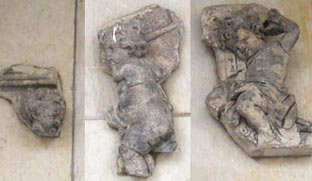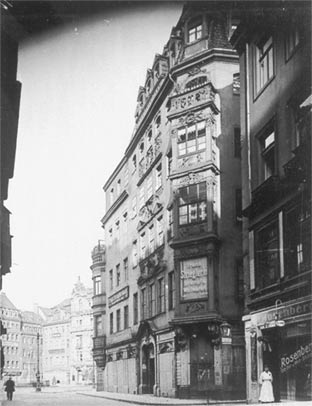Heinrich Schütz Residence
Building project: Reconstruction of the Heinrich Schütz House, the
Köhler House and a functional extention in a contemporary design vocabulary.
Function: Upper price senior citizens appartments with nursing
and service areas + public areas in the ground floor and downstairs.
Builder: Diakonie-Stiftung Martinshof Rothenburg Oberlausitz
Architect:
Eckard Feddersen (Berlin) - www.feddersen-architekten.de
General planning / Project management: www.kubus-generalplaner.de
(Stuttgart)
Website:
www.heinrich-schuetz-residenz.de
Among other things with Information
leaflet (pdf), construction
sign building-blackboard and a press
bulletin (pdf)
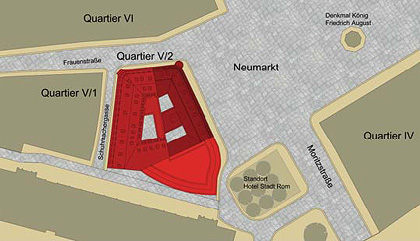
Site plan
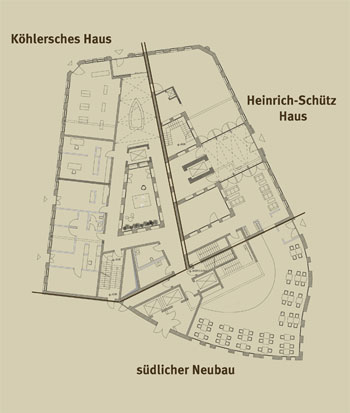
Groundplan - ground
floor level

Drawing - Source:
www.martinshof-diakoniewerk.de
(without the scheduled new building)

Architect's
design planned to be carried into effect.
Visualization: Feddersen Architekten
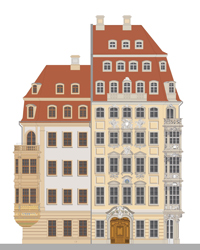 |
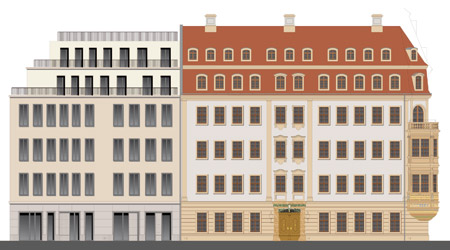 |
 In the picture on the
right: Proposed compromise of the GHND (not carried out, the builder however
took into consideration the suggestion to follow the historic course of
the street.)
In the picture on the
right: Proposed compromise of the GHND (not carried out, the builder however
took into consideration the suggestion to follow the historic course of
the street.)
Heinrich- Schütz- House
The electoral-saxonian court conductor Heinrich Schütz lived in this house (with intermissions) from 1629 till 1657. The building dates back to the 16th century when the Frauentor with the recently excavated barbican was demolished. It was erected about 1530 in connection with a renovation of the fortifications 1519-29. It was one of the first renaissance buildings ever in Dresden and in accordance with the new building regulations it had to be build as a solid stone building. (1491 Great city fire).
Although
the house had been rebuilt several times, the gorgeous relief adorned
plinth of the oriel at the corner of Frauenstraße, created around 1530
by Christoph Walter I, had survived until 1945. The carved sandstone portal
with stunning rustic-style copings and oak leaf adorned lintel was created
about 1630. All important parts of oriel as well as portal have been preserved.
1730 the house was augmented and provided with a mansard roof. The oriel
got its stony balusters on the balcony 1730/31. In the 19th century the
painting and adornment was removed, the mansard roof pulled down and replaced
by a mistaken saddle roof.
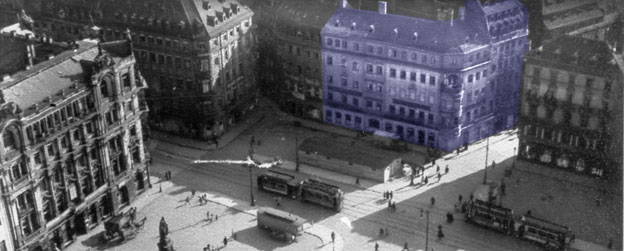
Schütz- und Köhlersche House (marked blue) in the 1930ties
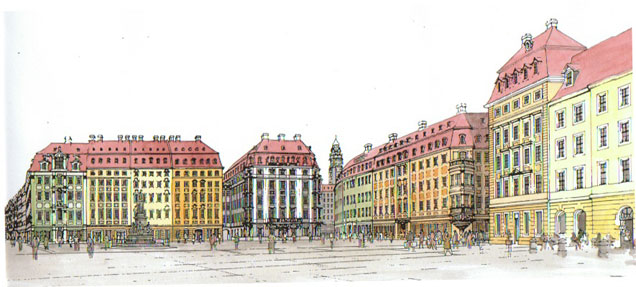
Architectural drawing of the reconstructed Neumarkt from the fifties with Schütz House (recognizable at the oriel)
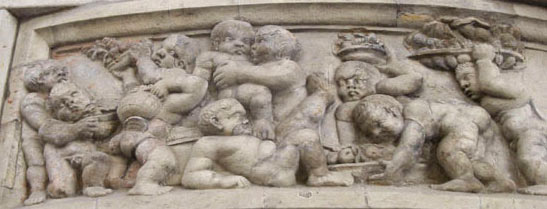
Part of the children
frieze at the bowfront of the oriel at Schütz House (February 06).
The Köhler House
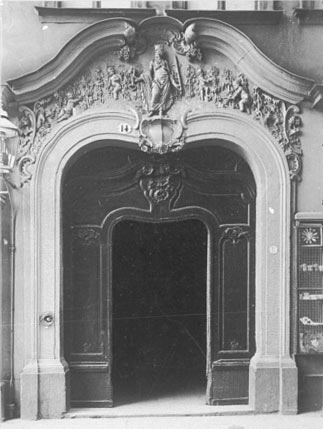
Frauenstraße 14, portal
of the Köhlersche House Photo before 1945 /
Photo: Sächsische Landes- und Universitätsbibliothek Dresden / Deutsche
Fotothek
This Town house was most likely built by S. Locke after 1749 for the wine merchant, vineyard owner and master cooper J. Köhler. The double barrel vaults, one below the other for storeage of the wine casks were a rarity. Whereas the façade towards the Schumachergasse remained entirely plain, the middle ressaut in the Frauenstraße with the most sumptuous rocaille decor in Dresden was embellished. The basket-handle arch formed portal was held in very sweeping rococo shapes. The Janusfaced figure over the portal recess represents spring (a young woman) and autumn (an old man with a beard) in the vineyard, which is being tilled, alternatively harvested by the puttos. The head with the two faces is preserved as an original find. The iconography of the representations on bowfront and portal are considered to be an in civic architecture exceptionally varied and high-class example of portraying the profession. The sculptor is to be sought for in the entourage of Knöffler.

![]() Janus
head over the portal of the Köhler House (original find)
Janus
head over the portal of the Köhler House (original find)

